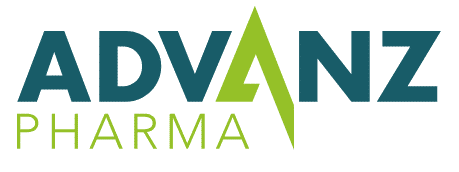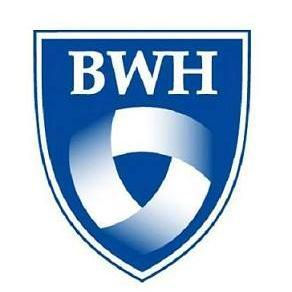预约演示
更新于:2025-07-27
Triamterene
氨苯蝶啶
更新于:2025-07-27
概要
基本信息
原研机构 |
非在研机构- |
权益机构- |
最高研发阶段批准上市 |
最高研发阶段(中国)批准上市 |
特殊审评- |
登录后查看时间轴
结构/序列
分子式C12H11N7 |
InChIKeyFNYLWPVRPXGIIP-UHFFFAOYSA-N |
CAS号396-01-0 |
关联
3
项与 氨苯蝶啶 相关的临床试验NCT05125237
Data Analysis for Drug Repurposing for Effective Alzheimer's Medicines (DREAM)- Amiloride vs Triamterene
This study aims to evaluate the comparative risk of dementia/Alzheimer's disease onset between patients treated with medications that target specific metabolic pathways and patients treated with alternative medications for the same indication.
开始日期2021-10-01 |
申办/合作机构 |
IRCT20111206008307N37
The impact of Triamterene-Hydrochlorothiazide plus Furosemide versus Hydrochlorothiazide plus Furosemide in patients with heart failure and Refractory edema: A randomized clinical trial.
开始日期2019-10-21 |
NCT00000525
Diuretics, Hypertension, and Arrhythmias Clinical Trial
To determine whether hypertensive patients with ECG abnormalities and receiving hydrochlorothiazide diuretics were at increased risk of sudden death.
开始日期1986-07-01 |
申办/合作机构 |
100 项与 氨苯蝶啶 相关的临床结果
登录后查看更多信息
100 项与 氨苯蝶啶 相关的转化医学
登录后查看更多信息
100 项与 氨苯蝶啶 相关的专利(医药)
登录后查看更多信息
2,261
项与 氨苯蝶啶 相关的文献(医药)2025-11-01·JOURNAL OF AFFECTIVE DISORDERS
ENaC inhibitors for the management of lithium related polyuria: a systematic review
Review
作者: Young, Allan H ; Strawbridge, Rebecca ; Ott, Michael ; Prabhu, Anusha ; Abbott, Molly G ; Meyer, Jonathan M ; Werneke, Ursula
BACKGROUND:
By entering collecting duct principal cells via the epithelial sodium channel (ENaC), lithium is capable of inducing vasopressin insensitivity, resulting in excessive urine production, nephrogenic diabetes insipidus (NDI) and potential for other long-term forms of renal dysfunction. ENaC inhibitors (ENaC-I) such as amiloride have been shown in animal models to minimise this adverse effect, and while ENaC-I are often considered an effective strategy, the literature on ENaC-I for lithium-related polyuria has not yet been synthesised despite the importance of this topic. This review aimed to identify all published evidence for adjunctive use of an ENaC-I for lithium-related polyuria to estimate its effectiveness while also exploring potential moderators of effectiveness.
METHOD:
The systematic search covered databases MEDLINE, EMBASE and PsycINFO complemented by handsearches, aiming to identify all studies of ENaC-I interventions in lithium-treated patients with pre- and post-ENaC-I polyuria as outcomes.
RESULTS:
10 studies totalling 25 participants were eligible for inclusion and were synthesised narratively. Amiloride was the ENaC-I used in 24/25 participants, and triamterene in the other. 8/10 publications were single case reports, 4 of which presented substantial confounding issues. Clear improvements to polyuria were demonstrated in most papers, including the two larger studies.
CONCLUSIONS:
Although it appears very likely that ENaC inhibitors help ameliorate polyuria in lithium-treated patients, the quantity and quality of evidence is low. Heterogeneity in patient characteristics, intervention characteristics and study designs limit conclusions regarding the contribution of factors likely to influence ENaC-I effectiveness for lithium-induced polyuria. Besides, adverse effects require further exploration.
2025-10-01·BIOCHIMICA ET BIOPHYSICA ACTA-MOLECULAR BASIS OF DISEASE
Harnessing integrated bioinformatics to identify new diagnostic and therapeutic strategies for heart failure
Article
作者: Wang, Ruilin ; Shang, Min ; Fu, Guosheng ; Sun, Shuo ; Huang, Chengchen ; Lai, Chaojie
Heart failure (HF) is a life-threatening condition that poses a significant challenge on public health, particularly among the elder populations. To develop new diagnostic and therapeutic strategies for HF, we analyzed large-scale transcriptome sequencing data from HF patients as an exploratory approach. We identified 18 HF-related genes and developed a robust scoring model for HF diagnosis, by applying two machine learning algorithms for data analysis. Meanwhile, we evaluated and compared the predictive abilities of three bioinformatics methods in identifying potential HF treatment drugs. Significantly, an unconventional network-based proximity analysis, integrating multidimensional drug target information, outperformed other methods in the assessment of predictive ability. To validate these findings, we tested several candidate drugs in a mouse model transitioning from acute myocardial infarction (MI) to chronic HF. Among the candidates, mirtazapine exhibited cardioprotective effects in both early (1-week) post-MI and chronic HF (4-week post-MI) settings, while cabergoline showed potential efficacy primarily in the early post-MI phase. Additionally, the screened triamterene, used as a positive control, exhibited protective effects in both early post-MI and chronic HF stages. Mechanistic studies revealed that growth factor receptor-bound protein 14 and Ras-related protein Rab-3A were critical to the observed cardioprotection. These findings provide valuable evidence and insights for exploring potential therapeutic agents for HF treatment.
2025-07-01·JOURNAL OF HAZARDOUS MATERIALS
Association between organic micropollutants in tap water and human exposure and birth outcomes: Implications for environmental health in northern Puerto Rico
Article
作者: Kaeli, David ; Rich, Stephanie L ; Padilla, Ingrid Y ; Manjourides, Justin ; Alshawabkeh, Akram N ; Gao, Griffith ; Feng, Yinmei ; Rosario-Pabón, Zaira ; Helbling, Damian E ; Li, Guangyu ; Gu, April Z ; Vega, Carmen Velez ; Meeker, John D
The presence of micropollutants in Puerto Rico's tap water, potentially linked to nearby Superfund sites, was hypothesized to contribute to the region's higher preterm birth rate than the US mainland. This study analyzed the presence of 175 micropollutants in tap water samples collected from participant households and evaluated their association with human exposure using 14 oxidative stress and inflammation biomarkers in urine samples collected from pregnant participants, and further with the subsequent birth outcome information. Notably, three out of four oxidative stress biomarkers consistently showed negative correlations with five micropollutant categories, highlighting the oxidative stress induced by these contaminants. For the ten selected inflammation-related biomarkers, two showed positive yet not significant correlations with the five categories of micropollutants and, only one biomarker (MMP1), an inflammation biomarker whose down-regulation was associated with pre-mature birth implications, showed significant negative correlation with industrial chemicals and pesticides. Interestingly, the detected urinary phthalate metabolites in pregnant women could not be linked with the two parent phthalates found in the tap water, suggesting that the two phthalates in tap water may not be the primary source of phthalate exposure to human body. Furthermore, hormones in tap water showed significant moderate-to-strong negative correlations with birth outcomes, raising specific health concerns for pregnant women in northern Puerto Rico. This is the first study to investigate the association among a wider spectrum of tap water micropollutants with pregnancy exposure and birth outcome in Puerto Rico and provide insights into water quality and associated human health impacts.
6
项与 氨苯蝶啶 相关的新闻(医药)2025-06-07
·梅斯医学
16 岁的小杰身材结实,个子不算太高,但性格腼腆沉稳。自初中起,他就常常头晕乏力,有时跑步后会觉得胸口发闷、心跳特别快。起初父母以为是他运动少、体质差,没太在意。直到有一次学校体检发现他的血压高得惊人——收缩压达到160mmHg,老师建议家长带他去医院进一步检查。父母听了很吃惊,“我们家没有高血压病史啊,这孩子又不胖,是不是仪器坏了?”但小杰后来在家测量几次血压依然偏高。于是,一家人来到医院求诊。医生在详细询问病史后,注意到小杰并没有摄入高盐、高热量饮食的习惯,家族中也无人在这么年轻时就患高血压。体检时他神志清楚,体格正常,但血压确实持续升高,且心电图提示轻度左心室肥厚。进一步的实验室检查显示:小杰的血钾水平偏低,血浆肾素活性和醛固酮水平均显著降低。这引起了医生的高度怀疑——会不会是某种钠潴留性疾病?为明确病因,医生建议进行基因检测。结果显示,小杰携带 SCNN1B 基因突变,确诊为一种罕见的单基因性高血压疾病:Liddle 综合征。“什么是假性醛固酮增多症Liddle综合征又称假性醛固酮增多症,是1963年Liddle等首先报告,故称为Liddle综合征。Liddle 综合征是一种罕见的遗传性疾病,由肾功能异常导致高血压(高血压)引起。这种疾病是由编码上皮钠通道 (ENaC) 的 3 个基因(SCNN1A、SCNN1B 和 SCNN1G)之一的致病变异(突变)引起的。“临床表现Liddle 综合征的临床表现通常不典型,患者除血压升高外,很少有其他明显的体征,这给临床诊断带来了挑战。约 92% 的致病突变携带者会出现高血压,且许多患者在青少年甚至儿童时期就已出现高血压。因此,对于年轻患者出现顽固性高血压的情况,临床医生应考虑 Liddle 综合征的可能性。尽管高血压是最突出的表现,其严重程度及其对心、脑、肾等靶器官的影响因人而异。典型的实验室异常包括低钾血症、代谢性碱中毒、低血浆肾素活性和低醛固酮水平,但这些异常在所有患者中并不一定同时出现。部分患者可能并无明显的低钾血症,因而容易被误诊为原发性高血压或其他继发性高血压病因。本病的发病机制源于肾脏中上皮钠通道(ENaC)活性异常增强,导致钠大量重吸收,从而引起钠潴留、血容量增加及高血压。同时,钾和氢离子的排出增加,造成低钾血症和代谢性碱中毒。这一机制类似于醛固酮的作用,但在 Liddle 综合征中,ENaC 的活化并不依赖于醛固酮,而是由基因突变直接驱动。因此,在高钠负荷状态下,肾素-血管紧张素-醛固酮系统受到负反馈抑制,表现为低肾素、低醛固酮状态。“诊断Liddle 综合征的诊断通常从识别顽固性高血压开始,结合家族史及实验室检测结果,如低肾素、低醛固酮水平等,提示可能存在钠潴留型高血压。美国心脏协会将顽固性高血压定义为在使用包括利尿剂在内的三种降压药后血压仍未达标,此时应考虑 Liddle 综合征作为继发性高血压的可能原因。确诊依赖于基因检测,目前已知 SCNN1A、SCNN1B 和 SCNN1G 三个基因的突变可引发该病,尤其是 SCNN1B 和 SCNN1G 最常见。确诊前建议进行遗传咨询,检测阳性后应开展家系调查,筛查可能受影响的亲属。患者家属的早期识别和干预有助于预防高血压相关并发症。阿米洛利(一种直接抑制 ENaC 的保钾利尿剂)对 Liddle 综合征患者具有良好疗效,其治疗反应也是诊断的一部分。其他利尿剂对该病效果有限或无效。尽管多数患者不会进展为慢性肾病,但由于基因缺陷影响肾功能调节,不适合作为器官捐献者;在部分病例中,肾移植通过替代功能正常的 ENaC 可缓解症状。“治疗Liddle 综合征的治疗目标是控制高血压,降低心血管风险,并改善整体健康状况。与一般高血压患者不同,Liddle 综合征患者对标准降压药(如噻嗪类利尿剂或 ACE 抑制剂)的疗效常常不佳,若未识别病因并给予针对性治疗,可能被误认为是药物依从性差,影响患者的情绪与医患信任。因此,应特别关注患者对阿米洛利的治疗反应,以辅助诊断和指导治疗。阿米洛利是一线治疗药物,能够直接阻断肾脏上皮钠通道(ENaC),有效纠正钠潴留和继发性高血压。氨苯蝶啶也是有效选择,但疗效略逊于阿米洛利。其他保钾利尿剂如螺内酯、依普利酮和 finerenone 主要通过拮抗醛固酮作用,因 Liddle 综合征患者醛固酮水平本就偏低,因此这类药物无效。事实上,对螺内酯的无效反应正是 Grant Liddle 最早识别该病的线索之一。治疗过程中需定期监测血钾、钠、氯及二氧化碳结合力(CO₂CP),预防电解质紊乱如高钾血症、低钠血症和高氯性酸中毒。阿米洛利非缓释剂型,建议每日固定时间服用;部分患者可能需分两次服药以稳定血压。对晚年确诊患者,如单用阿米洛利控制不佳,常需联合其他降压药物以达目标血压。参考资料:[1]蒋晖.Liddle综合征研究进展[J].心血管病学进展,2018,39(2):263-266.[2] 崔云英.Liddle综合征患者的临床及基因突变特征[D].北京:北京协和医学院,2017.[3]UTSHIMKETSRAC M, et al. Liddle' s syndrome:Heritable human hypertension caused by mutations in the,79(3):407-414来源 | 梅斯医学编辑 | wanny神经系统罕见病交流群↓点击下方“阅读原文”,下载梅斯医学APP吧!
2024-08-26
✦
✦
✦
随着中国经济的快速增长和科技实力的提升,国内新药研发蓬勃发展,为出海打下良好基础。一直以来,中国医药、原料药出口贸易在东南亚市场占有举足轻重的份额。其中,印度尼西亚、泰国、越南、菲律宾和马来西亚五个国家占据了东南亚医药市场的90%以上。未来这些国家将会成为国内企业转战的重要市场,包括投资建厂等深度合作开发。
为助力中国药企加速布局东南亚医药市场,9月11日,东南亚医药市场开拓机遇与挑战主题会议将于CPHI & PMEC 制药工业展(深圳)展会期间在深圳会展中心(福田)举办。会议将从当下市场的最新国际形势出发,结合案例与报告,与上下游企业共同探讨东南亚市场的发展机遇。
✦
✦
✦
东南亚医药市场开拓机遇与挑战主题会议
会议时间
9月11日
会议地点
深圳会展中心(福田)
论坛区A(展位:9A56)
主办单位
上海博华国际展览有限公司
承办单位
北京东方比特科技有限公司
协办单位
E药经理人
扫描太阳码
0元领票并报名听会
8月30日前完成预登记
现场可领取电子会刊一份
SHENZHEN
会议议程
09:30
主持人致辞
09:40-10:20
东南亚国家医药国际贸易报告
嘉宾介绍
吴惠芳
北京东方比特(健康网)总经理兼首席研究员,北京玉德未来控股有限公司副总裁
吴女士在军事医学科学院药物分析专业获理学硕士学位,1980年起从事药学相关工作,2000年前在部队医疗、科研机构从事临床药学、科研管理等工作,技术职务副主任药师。2000年退役后从事医药信息研究工作,专注于医药行业研究、市场研究、产业链结构研究等领域。在医药原料药、医药商品进出口、医药产业数据等信息方面有发布了大量文献资料和报告发表。为国内外企业、政府和科研机构提供咨询服务。连续多年为“中国化学制药工业协会”所著《医药发展蓝皮书》、《中国医药手册》作者之一;是《中国医药报》、《医药经济报》的特约撰稿人,在国内重要医药报刊发表大量文章。多次被邀请在中国医药行业大型会议和展览上做有关中国医药市场专题演讲。她的演讲以实际数据和案例阐明问题、总结变化规律,在中国制药企业中广为流传,受到医药界的好评。
☝🏿☝🏿上下滑动了解嘉宾完整简介
10:20-10:50
中国制药企业出海东南亚国家的案例分享
嘉宾介绍
王亚锋
上海医药国际业务事业部东南亚区域负责人、上药泰国总经理
中国药科大学本科,中欧国际工商学院Global EMBA。
从事医药国际营销工作十余年,深厚的医药行业知识和专业能力。拥有丰富的海外子公司运营和营销团队管理经验。深度参与海外工厂立项,写字楼,仓库等绿地项目建设。
海外常驻包括非洲加纳,尼日利亚,乌干达,科特迪瓦,东南亚泰国,菲律宾等多个国家。熟悉多个市场药政法规以及行业准入要求。多次在海外国家从零开始设立全资公司、合资公司,组建销售团队,实现业绩从零突破,运作药品进入国家用药指南和国家医保。所在团队曾实现单品种中国制剂出口第一。
历任复星医药集团桂林南药国际商务代表,销售经理,海外国家经理,大区经理等,现任上海医药国际业务事业部东南亚区域负责人,上药泰国总经理。
☝🏿☝🏿上下滑动了解嘉宾完整简介
10:50-11:20
印度尼西亚制药业的机遇和市场开拓实践
嘉宾介绍
张君丽
成都市一诺医药化工有限公司总经理采购总监
公司团队深耕印尼市场十年,专注医药API等产品出口;
聘请多名印尼本地员工,长期穿梭在印尼各个制剂工厂,拜访客户,与当地前十大药企均有超级深度的合作与链接!
11:20-11:45
印尼清真医药产品市场情况更新
嘉宾介绍
Dr. Ir. Muslich, M.Si
Halal Partnership
and Audit Services Director, LPPOM
获得IPB大学学士(S1)、研究生(S2)和博士(S3)学位;此前曾在多家私营公司工作(1991年至1993年),PT TELKOM WITEL IX Jayapura农业和农用工业发展中心经理(1993年至1994年),LPPOM MUI清真保证体系负责人(2010年至2015年),QA和LPPOM MUI标准负责人(2015年至2019年),LPPOM MUI高级顾问(2020年),MUI清真认证要求开发团队负责人(2010年至2011年);现为IPB大学农业技术学院农业工业工程系讲师(自1994年起),清真审核员(自1995年起),清真管理体系标准制定技术委员会(SNI 99 001)成员,清真家禽屠宰场(SNI 99 002),家庭切清真反刍(SNI 99 003),清真食品(SNI 99 004)国家标准化机构(自2015年起),SKKNI主管能力测试设备开发团队负责人Halal & SKKNI清真审核员(自2017年起),国家认证机构能力评估员职业(BNSP)(自2015年起),食品安全能力评估员,机构专业认证(LSP)食品质量保证与安全(JMKP)(自2015年起);于2020-2022年被任命为LPPOM MUI清真合作与审计服务总监。
☝🏿☝🏿上下滑动了解嘉宾完整简介
11:20-12:00
圆桌讨论:寻找东南亚市场的机会
讨论嘉宾
深圳市远邦医药有限公司
湖南尔康制药股份有限公司
成都倍特药业有限公司
广州康臣药业有限公司
......
扫描太阳码
0元领票并报名听会
8月30日前完成预登记
现场可领取电子会刊一份
把握东南亚市场发展机遇
加速融入全球制药供应链
随着东南亚医药市场的发展潜能进一步释放,中国医药企业将迎来更多发展机遇。作为中国药企链接国际市场的重要纽带,CPHI & PMEC 制药工业展(深圳)将携手400余家优质展商,共同探索企业在东南亚乃至全球市场的发展路径。
下面就请跟随小编的步伐,一起走近本期的优选展商吧!
浙江瑞邦药业股份有限公司
展位:9F08
浙江瑞邦药业股份有限公司成立于1956年,具有60多年生产医药原料药和食品添加剂的生产经验。公司以药品生产质量管理规范(GMP) 标准组织生产和销售。本公司的产品获得了美国FDA,欧洲CEP和中国GMP的认证。主要产品有葡萄糖酸盐系列,莫匹罗星,莫匹罗星钙,环孢菌素,夫西地酸等。浙江瑞邦药业股份有限公司在国内外都享有良好的声誉。产品远销美国,欧洲,日本,印度及其他南美和东南亚地区。
主推产品
环孢菌素、莫匹罗星、莫匹罗星钙、葡萄糖酸钙、葡萄糖酸锌、葡萄糖酸钾、葡萄糖酸镁、葡萄糖酸亚铁、葡萄糖酸铜、葡萄糖酸锰、葡萄糖酸钠、多粘菌素B、夫西地酸、夫西地酸钠、米尔贝肟、葡萄糖酸内酯、非达霉素、甘草次酸、原儿茶酸。
☝🏿☝🏿上下滑动查看完整展商介绍
河北华晨药业集团有限公司
展位:9D46
河北华晨药业集团有限公司,始建于1991年,坐落于黄骅经济开发区。是一家集研发、生产、销售药用包装材料、原料药、制剂、医疗器械,开展国内外贸易为一体的医药企业。集团公司现下设河北华晨药业有限公司、黄骅华宾生物科技有限公司、河北华迪药业有限公司、华晨吉海(北京)药物研究院。目前华晨药业拥有通过GMP认证的药用氯化钠、碳酸氢钠、氯化钾及新增制剂包括片剂、硬胶囊制剂、颗粒剂、散剂、软膏剂、凝胶贴膏剂、口服液等数十种,同时生产药用PE袋、膜、包装桶、瓶等药用包装材料等。
主推产品
氯化钠、碳酸氢钠、氯化钾、氯化钙、氯化铵、依地酸二钠、重酒石酸胆碱、富马酸(辅料、富马酸亚铁、醋酸钙、醋酸钠、硫酸镁、碘化钾、氯化镁、富马酸亚铁、葡萄糖酸锌、葡萄糖二酸钙、双乙酸钠、树脂再生剂、碳酸镧、硫酸钾、利多卡因、氟比洛芬、氯化镁、麝香草粉、盐酸利多卡因、葡萄糖酸钙、洛索洛芬钠、磷酸奥司他韦、无水硫酸钠、氨苯蝶啶、托匹司特、硫酸亚铁、西甲硅油、硫酸双肼屈嗪、甘羟鋁、葡萄糖酸亚铁、叔丁醇镁、异丙醇镁、二甲硅油、碳酸钙、亚硫酸镁(六水)、硫酸钾、乳酸钙、乳酸钠、乳果糖、丙胺卡因、喷托维林、丁卡因、双氯芬酸依泊胺、克立硼罗、阿达帕林、盐酸异丙嗪、高岭土、克罗米通、盐酸异丙嗪、氨苯蝶啶、叔丁醇镁、异丙醇镁、亚硫酸镁知名。
☝🏿☝🏿上下滑动查看完整展商介绍
山西阳和药业有限公司
展位号:9A13
山西阳和药业有限公司成立于2017年,坐落于山西省大同市阳高县龙泉工业园区。公司注册资本5100万元,总占地面积100亩。阳和药业作为化学原料药的商业化生产基地,专业从事特色化学原料药的研发、生产、销售。公司现拥有多条原料药生产线,产品涉及呼吸系统、消化系统等多个领域。目前公司可大批量生产乙酰半胱氨酸、间苯三酚、间苯三酚三甲醚、聚乙烯醇等原料药。
主推产品
乙酰半胱氨酸、间苯三酚、聚乙烯醇、间苯三酚三甲醚。
☝🏿☝🏿上下滑动查看完整展商介绍
浙江荣耀生物科技股份有限公司
展位:9C51
浙江荣耀生物科技股份有限公司创立于1999年,位于台州湾经济技术开发区,是一家集研发、生产、销售于一体的创新型医药企业,是国家高新技术企业、浙江省专精特新中小企业、浙江省科技型中小企业。业务涵盖医药原料药及中间体、兽药原料药及中间体、CDMO等。
主推产品
二硝托胺148-01-6、甲砜霉素15318-45-3、氟苯尼考73231-34-2、非班太尔58306-30-2、芬苯达唑43210-67-9、莫昔克丁113507-06-5、赛拉菌素220119-17-5、氟雷拉纳864731-61-3、奥拉替尼1208319-26-9、2-氨基-N-(2、2、2-三氟乙基)乙酰胺盐酸盐1171331-39-7、三氯苯达唑68786-66-3、癸氧喹酯18507-89-6、尼卡巴嗪330-95-0、3′、5′-二氯-2、2、2-三氟苯乙酮130336-16-2、4-氯吡咯并嘧啶3680-69-1、反式-N-甲基-[4-(甲氨基)环己基]甲磺酰胺1809995-95-6、依帕司他82159-09-9、盐酸氨溴索23828-92-4、盐酸金刚乙胺1501-84-4、盐酸溴己新611-75-6、西司他丁82009-34-5、3-甲基-6-硝基-1H-吲唑6494-19-5、2-[4-(2-吡啶基)苄基]-肼羧酸叔丁酯198904-85-7、2-氨基-1-(2、5-二甲氧基苯基)乙醇3600-87-1、3-(三氟甲基)-5、6、7、8-四氢-[1、2、4]三唑并[4、3-a]吡嗪盐酸盐762240-92-6、(3S、4R)-4-(4-氟苯基)-1-甲基-3-哌啶甲醇105812-81-5、1-(4-氨基苯基)环戊甲腈115279-73-7、3-氨基-1-金刚烷醇702-82-9、1-金刚烷甲酸828-51-3、2-金刚烷酮700-58-3、1-金刚烷胺768-94-5、1-金刚烷甲醇770-71-8、2-金刚烷醇700-57-2、1-金刚烷醇768-95-6。
☝🏿☝🏿上下滑动查看完整展商介绍
江苏宇田医药有限公司
展位:9E31
江苏宇田医药有限公司是一家从事现代医药研发、生产、销售为一体的新型特色API及CDMO制药企业,致力于为国内各大制药企业提供高质量的原料药与中间体,公司产品同时远销欧洲、日韩、印度等数十个国家,为国家重点高新技术企业、市科技小巨人企业、中华药港新医药产业基地骨干企业之一。
宇田医药始终把科研开发作为企业可持续发展的支撑力量,是国内科研投入较多的药企之一,公司以连云港研发中心为科研载体,配合杭州科巢生物科技、连云港万科生物科技、黑龙江迪诺医药,自主创新能力不断增强。形成了“以一带三”的良性格局。宇田医药在江苏连云港、黑龙江佳木斯建有两个生产基地,获得国家高新技术企业、省级工程技术研究中心、江苏省瞪羚企业、江苏省科技型中小企业、安全标准化二级企业、省两化融合示范试点企业,同时也获得了原料药品种的GMP和注册现场核查的二合一认证,先后承担省/市级成果转换等多个省/市级科技项目;获得授权专利与商标数十项;通过ISO9000、ISO14000认证。这些荣誉的取得标志着企业药品生产质量和管理水平走在了全国医药行业前列。
主推产品
原料药:碘克沙醇、碘海醇、阿托伐他汀钙、瑞舒伐他汀钙、盐酸伊伐布雷定、利奈唑胺、西洛多辛、盐酸厄洛替尼、盐酸莫西沙星及各中间体。
中间体:造影剂系列中间体、多尼培南侧链、比阿培南侧链、1,4-丁二磺酸。
☝🏿☝🏿上下滑动查看完整展商介绍
江苏同禾药业有限公司
展位:9D26
江苏同禾药业有限公司是江苏万兴创业投资有限公司的全资子公司,是一家集制剂药、原料药和保健食品的研发、生产、销售为一体的国家高新技术企业。连续8年,跻身于常熟市百强企业前50 名。
公司拥有原料药、片剂、胶囊剂和颗粒剂的GMP证书。硫辛酸、6.8-二氯辛酸乙酯、右旋硫辛酸钠、环丙贝特、10-甲氧基亚氨基芪等多个产品被评为江苏省高新技术产品;硫辛酸、盐酸二甲双胍等取得了原料药品批件,厄多司坦片、氨酚伪麻分散片和新雪胶囊等取得药品注册批件和新药证书;硫辛酸片和胶囊即将取得新药证书,另有10多个新药正在SFDA审批中。调节血糖和控制并发症的保健食品唐苹片正在全国热销中。
主推产品
硫辛酸系列、右旋硫辛酸、右旋硫辛酸钠盐、右旋硫辛酸氨基丁三醇盐。
☝🏿☝🏿上下滑动查看完整展商介绍
CPHI & PMEC 制药工业展(深圳)致力于打造国际化制药产业生态圈,汇集产业链上下游实力企业,以技术驱动产业提升,助推更多中国药企扬帆“出海”,聚势共赢!
扫描二维码 0元领票
8月30日前完成预登记
现场可领取电子会刊一份
金秋九月·不见不散!
联系我们
参观咨询
林女士
电话:021-33392105
邮箱:ashley.lin@imsinoexpo.com
张女士
电话:010-58036315
邮箱:zhangyuanyuan@cccmhpie.org.cn
参展咨询
茅女士
电话:021-33392250
邮箱:chris.mao@imsinoexpo.com
吴女士
电话:010-58036296
邮箱:wuyushuang@cccmhpie.org.cn
👇点击“阅读原文”,免费领取展会参观门票!!
高管变更
2024-01-29
January price increases have become a ritual for the pharmaceutical industry. Every year, pharmaceutical companies have raised the prices of medicines at the expense of patients, employers, and health plans alike. We don’t have to look far for a number of examples of how the pharmaceutical industry continues to put profits over patients.
In the first three weeks of January alone, pharmaceutical companies increased the list price of 775 brand-name drugs ranging from 1 to 33%, including a 6% increase on several critical cancer medicines. When compared to an average inflation rate of 3.1%, these add up to significant increases on already, high-cost drugs. And still more price increases are expected to be disclosed by drugmakers throughout the year.
Efforts by the federal government to curb price increases haven’t discouraged manufacturers from raising the cost of prescription drugs like clockwork. Just a year after the Inflation Reduction Act rebates kicked in, 64 products have triggered penalties for taking increases faster than inflation.
The first round of Medicare-negotiated prices will be announced this fall, but that hasn’t dissuaded drugmakers from maximizing profits before the negotiations take effect in 2026. The country’s top-selling Medicare Part D drug, Bristol Myers Squibb’s blood thinner Eliquis, which is included on the list of the first 10 medications to face Medicare price negotiation, increased its price this month by six percent.
Shockingly, some of the drugs taking large increases this month already cost six figures. The prices of Bristol Myers Squibb’s Abecma, a CAR-T cancer treatment for late-stage multiple myeloma that already cost more than $450,000 in 2023, increased by an additional $41,000. Pfizer’s Vyndaqel and Vyndamax, the world’s most expensive cardiovascular drugs, increased by nearly $1,500 for a one-month supply – that’s an extra $17,500 a year. Such sizable increases on these already-expensive drugs truly show how the industry has normalized maximizing profits at the expense of patients.
On the other end of the spectrum, generics aren’t immune to price increases either. While generics and biosimilars were designed to foster market competition and lower prices for patients, several generic manufacturers increased prices by double-digits this month. For example, prices for common everyday antibiotics Gentamicin Sulfate and Doxycycline increased by 25% and 10%, respectively, and diuretic Triamterene/HCTZ increased by 18%.
It’s important to remember that drug price hikes don’t take place in a vacuum. These increases add pressure to a system that is already struggling to pay for existing medicines, especially when those medicines are being deployed to treat conditions with large patient populations. Take GLP-1s, a high-demand class of diabetes and weight-loss drugs that dominated headlines over the last year. As Novo Nordisk and Eli Lilly raise the price of Ozempic and Mounjaro to nearly $970 and $1,070 a month respectively, there’s mounting concern over what this combination of growing demand and high prices means for the health system.
While investors anticipate Novo Nordisk to rake in $11 billion and $4 billion in revenue for Ozempic and Wegovy, respectively, the potential annual cost to Medicare could range from $13.6 billion to $26.8 billion, if just 10% of Medicare beneficiaries used Wegovy. As list prices continue to rise at a similar pace year-over-year, the U.S. health system can’t sustain this constant upward trajectory on all the drugs in the system while ensuring it has the financial capacity to accommodate new drug approvals.
Amidst these skyrocketing prices, however, Pharmacy Benefit Managers (PBMs) are actively lowering costs for employers and patients, thus creating that headroom to pay for future medicines. While pharmaceutical companies continue to raise list prices year-over-year, we work behind the scenes to fight the trend by driving competition, negotiating with drugmakers and incentivizing the use of less expensive medicines that deliver the same clinical value. In fact, PBMs are projected to save health plan sponsors and consumers more than $1 trillion from 2020 to 2029.
We use every tool in our toolbox to drive affordability and access, so it is disappointing but not surprising that the pharmaceutical industry likes to point the finger at PBMs for their higher prices. However, if the pharmaceutical industry’s claim that “rebates increase drug costs” were true, there would be a correlation between rebates and price increases. That is not the case. In fact, even though treatments for complex conditions including cancer, lupus and HIV/AIDS, (Pomalyst, Benlysta and Tivicay), have zero rebates, manufacturers have increased their prices between 5% and 6% this month. Further, 48 drugs under Medicare Part B, including blood thinners, antibiotics and cancer medications increased faster than inflation in the final quarter of 2023 alone.
The reality is rebates on prescription drugs are just one way that we drive costs down, not up. As some manufacturers increasingly play pricing games by offering multiple prices for the same medication, we’ve launched an entire formulary to ensure patient access to those lower list price options. As others discontinue effective products to artificially inflate the price of branded alternatives that they call “authorized generics”, we support patients in maintaining affordable access to the medications they need.
The bottom line: regardless of what pharma companies say and do, we will work relentlessly to protect patients and clients from their greedy, price-gouging tactics by countering these increases with competition while improving health outcomes in the process.
This year, let’s set a New Year’s resolution: holding pharma accountable for their high (and rising) prices, so we can say goodbye to this price-gouging once and for all.
Based on analysis of WAC price increases on brand and generic drugs taking effect in January 2024.
100 项与 氨苯蝶啶 相关的药物交易
登录后查看更多信息
研发状态
批准上市
10 条最早获批的记录, 后查看更多信息
登录
| 适应症 | 国家/地区 | 公司 | 日期 |
|---|---|---|---|
| 水肿 | 日本 | 1962-12-19 | |
| 心源性水肿 | 日本 | 1962-12-19 | |
| 高血压 | 日本 | 1962-12-19 |
未上市
10 条进展最快的记录, 后查看更多信息
登录
| 适应症 | 最高研发状态 | 国家/地区 | 公司 | 日期 |
|---|---|---|---|---|
| 食管鳞状细胞癌 | 临床前 | 美国 | 2025-04-27 |
登录后查看更多信息
临床结果
临床结果
适应症
分期
评价
查看全部结果
| 研究 | 分期 | 人群特征 | 评价人数 | 分组 | 结果 | 评价 | 发布日期 |
|---|
No Data | |||||||
登录后查看更多信息
转化医学
使用我们的转化医学数据加速您的研究。
登录
或

药物交易
使用我们的药物交易数据加速您的研究。
登录
或

核心专利
使用我们的核心专利数据促进您的研究。
登录
或

临床分析
紧跟全球注册中心的最新临床试验。
登录
或

批准
利用最新的监管批准信息加速您的研究。
登录
或

特殊审评
只需点击几下即可了解关键药物信息。
登录
或

生物医药百科问答
全新生物医药AI Agent 覆盖科研全链路,让突破性发现快人一步
立即开始免费试用!
智慧芽新药情报库是智慧芽专为生命科学人士构建的基于AI的创新药情报平台,助您全方位提升您的研发与决策效率。
立即开始数据试用!
智慧芽新药库数据也通过智慧芽数据服务平台,以API或者数据包形式对外开放,助您更加充分利用智慧芽新药情报信息。
生物序列数据库
生物药研发创新
免费使用
化学结构数据库
小分子化药研发创新
免费使用





